*NURSING > HESI > HESI Module 9 Exam (Already Graded A) Latest Questions and Complete Solutions (All)
HESI Module 9 Exam (Already Graded A) Latest Questions and Complete Solutions
Document Content and Description Below
HESI Module 9 Exam (A Graded) Latest Questions and Complete Solutions Questions 1. ID: 5A client who has undergone abdominal surgery calls the nurse and reports that she just felt “something give wa... y” in the abdominal incision. The nurse checks the incision and notes the presence of wound dehiscence. The nurse immediately: Contacts the physician Documents the findings Places the client in a supine position with the legs flat Covers the abdominal wound with a sterile dressing moistened with sterile saline solution Correct Rationale: Wound dehiscence is the disruption of a surgical incision or wound. When dehiscence occurs, the nurse immediately places the client in a low Fowler’s position or supine with the knees bent and instructs the client to lie quietly. These actions will minimize protrusion of the underlying tissues. The nurse then covers the wound with a sterile dressing moistened with sterile saline. The physician is notified, and the nurse documents the occurrence and the nursing actions that were implemented in response. Test-Taking Strategy: Use the process of elimination and note the strategic word “immediately.” Visualize this occurrence and recall that the primary concern when wound dehiscence occurs is the protrusion of underlying tissues. This will direct you to the correct option. Review the nursing actions to be taken immediately in the event of wound dehiscence if you had difficulty with this question. Level of Cognitive Ability: Applying Client Needs: Physiological Integrity Integrated Process: Nursing Process/Implementation Content Area: Perioperative Care Reference: Ignatavicius, D., & Workman, M. (2010). Medical-surgical nursing: Patient-centered collaborative care (6th ed., pp. 291, 292, 296). St. Louis: Saunders. Awarded 1.0 points out of 1.0 possible points. 2. ID: 5A client who just returned from the recovery room after a tonsillectomy and adenoidectomy is restless and her pulse rate is increased. As the nurse continues the assessment, the client begins to vomit a copious amount of bright-red blood. The immediate nursing action is to: Notify the surgeon Correct Continue the assessment Check the client’s blood pressure Obtain a flashlight, gauze, and a curved hemostat Rationale: Hemorrhage is a potential complication after tonsillectomy and adenoidectomy. If the client vomits a large amount of bright-red blood or the pulse rate increases and the patient is restless, the nurse must notify the surgeon immediately. The nurse should obtain a light, mirror, gauze, curved hemostat, and waste basin to facilitate examination of the surgical site. The nurse should also gather additional assessment data, but the surgeon must be contacted immediately. Test-Taking Strategy: Focus on the data in the question. Noting the words “bright- red blood” will assist in directing you to the correct option. Remember that the presence of bright-red blood indicates active bleeding. Review the nursing actions to be taken immediately when bleeding occurs after a tonsillectomy and adenoidectomy if you had difficulty with this question. Level of Cognitive Ability: Applying Client Needs: Physiological Integrity Integrated Process: Nursing Process/Implementation Content Area: Delegating/Prioritizing Reference: Ignatavicius, D., & Workman, M. (2010). Medical-surgical nursing: Patient-centered collaborative care (6th ed., p. 657). St. Louis: Saunders. Awarded 1.0 points out of 1.0 possible points. 3. ID: 0A client who has just undergone surgery suddenly experiences chest pain, dyspnea, and tachypnea. The nurse suspects that the client has a pulmonary embolism and immediately sets about: Preparing the client for a perfusion scan Attaching the client to a cardiac monitor Administering oxygen by way of nasal cannula Correct Ensuring that the intravenous (IV) line is patent Rationale: Pulmonary embolism is a life-threatening emergency. Oxygen is immediately administered nasally to relieve hypoxemia, respiratory distress, and central cyanosis, and the physician is notified. IV infusion lines are needed to administer medications or fluids. A perfusion scan, among other tests, may be performed. The electrocardiogram is monitored for the presence of dysrhythmias. Additionally, a urinary catheter may be inserted and blood for arterial blood gas determinations drawn. The immediate priority, however, is the administration of oxygen. Test-Taking Strategy: Focus on the client’s diagnosis and use the skills of prioritizing. Apply the ABCs (airway, breathing, and circulation) to find the correct option. Review the nursing actions to be taken immediately in the event of pulmonary embolism if you had difficulty with this question. Level of Cognitive Ability: Applying Client Needs: Physiological Integrity Integrated Process: Nursing Process/Implementation Content Area: Delegating/Prioritizing Reference: Ignatavicius, D., & Workman, M. (2010). Medical-surgical nursing: Patient-centered collaborative care (6th ed., p. 680). St. Louis: Saunders. Awarded 1.0 points out of 1.0 possible points. 4. ID: 7A nurse is assessing a client who has a closed chest tube drainage system. The nurse notes constant bubbling in the water seal chamber. What actions should the nurse take? (Select all that apply). Clamping the chest tube Changing the drainage system Assessing the system for an external air leak Correct Reducing the degree of suction being applied Documenting assessment findings, actions taken, and client response Correct Rationale: Constant bubbling in the water seal chamber of a closed chest tube drainage system may indicate the presence of an air leak. The nurse would assess the chest tube system for the presence of an external air leak if constant bubbling were noted in this chamber. If an external air leak is not present and the air leak is a new occurrence, the physician is notified immediately, because an air leak may be present in the pleural space. Leakage and trapping of air in the pleural space can result in a tension pneumothorax. Clamping the chest tube is incorrect. Additionally, a chest tube is not clamped unless this has been specifically prescribed in the agency’s policies and procedures. Changing the drainage system will not alleviate the problem. Reducing the degree of suction being applied will not affect the bubbling in the water seal chamber and could be harmful. The nurse would document the assessment findings and interventions taken in the client’s medical record. Test-Taking Strategy: Use the process of elimination and your knowledge regarding the priority actions in the care of a closed chest tube drainage system. Focus on the data in the question, noting that there is bubbling in the water seal chamber. Recalling that this may indicate an air leak will direct you to the correct options. Review the nursing actions to be taken immediately in the event that complications of a closed chest tube drainage system occur if you had difficulty with this question. Level of Cognitive Ability: Applying Client Needs: Physiological Integrity Integrated Process: Nursing Process/Implementation Content Area: Adult Health/Respiratory Reference: Ignatavicius, D., & Workman, M. (2010). Medical-surgical nursing: Patient-centered collaborative care (6th ed., pp. 648, 649). St. Louis: Saunders. Awarded 2.0 points out of 2.0 possible points. 5. ID: 7A nurse is helping a client with a closed chest tube drainage system get out of bed and into a chair. During the transfer, the chest tube is caught on the leg of the chair and dislodged from the insertion site. The immediate priority on the part of the nurse is: Contacting the physician Reinserting the chest tube Transferring the client back to bed Covering the insertion site with a sterile occlusive dressing Correct Rationale: If a chest tube is dislodged from the insertion site, the nurse immediately covers the site with sterile occlusive dressing. The nurse then performs a respiratory assessment, helps the client back into bed, and contacts the physician. The nurse does not reinsert the chest tube. The physician will reinsert the chest tube as necessary. Test-Taking Strategy: Use the process of elimination, noting the strategic word “immediate.” Eliminate the option that involves reinsertion of the chest tube first, because a nurse is not trained to insert a chest tube. To select from the remaining options, focus on the subject, dislodgment of a chest tube from its insertion site, and recall the complications associated with this occurrence; this will direct you to the correct option. Review the nursing actions to be taken immediately in the event of complications associated with a closed chest tube drainage system if you had difficulty with this question. Level of Cognitive Ability: Applying Client Needs: Physiological Integrity Integrated Process: Nursing Process/Implementation Content Area: Adult Health/Respiratory Reference: Ignatavicius, D., & Workman, M. (2010). Medical-surgical nursing: Patient-centered collaborative care (6th ed., pp. 648, 649). St. Louis: Saunders. Awarded 1.0 points out of 1.0 possible points. [Show More]
Last updated: 1 year ago
Preview 1 out of 39 pages
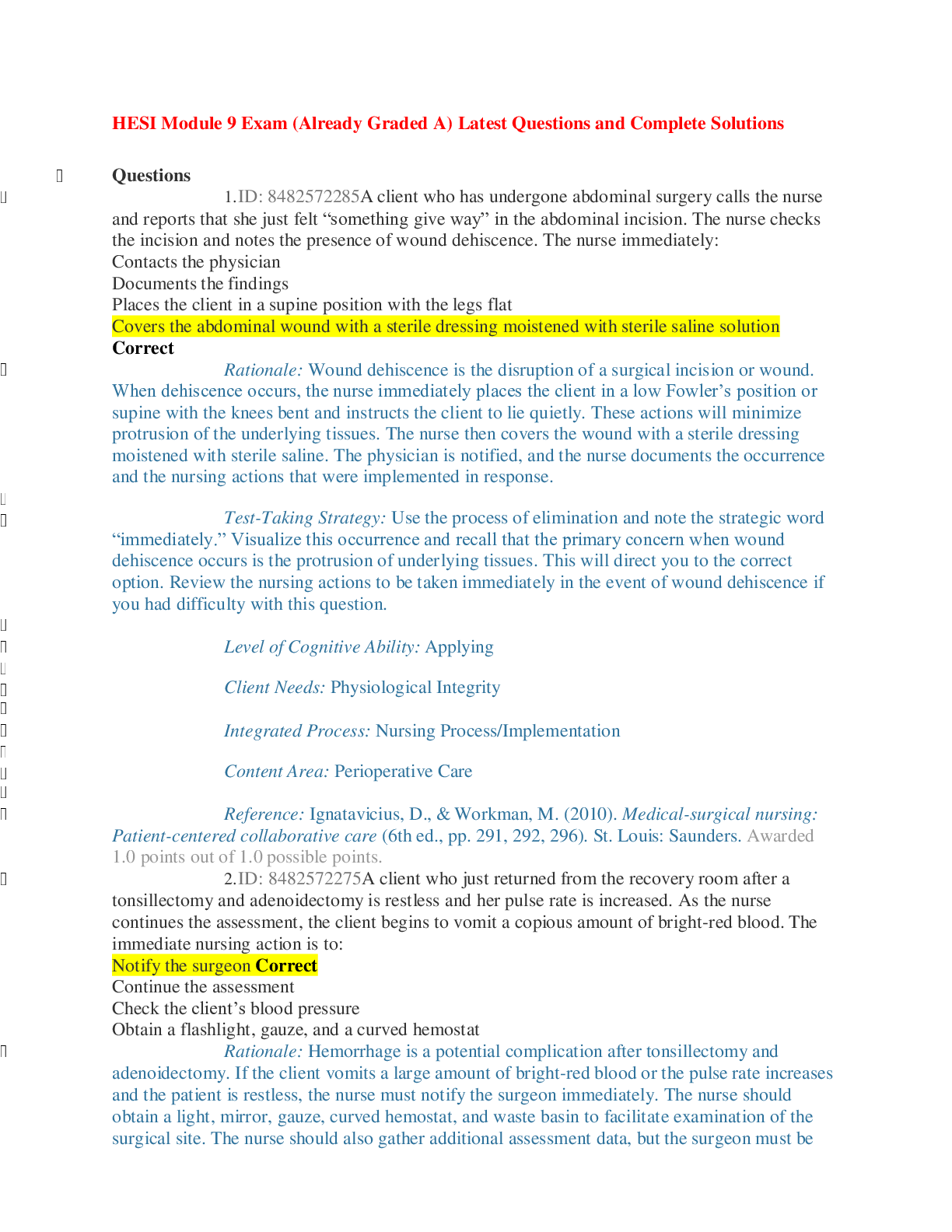
Reviews( 0 )
Document information
Connected school, study & course
About the document
Uploaded On
Jun 07, 2021
Number of pages
39
Written in
Additional information
This document has been written for:
Uploaded
Jun 07, 2021
Downloads
0
Views
35


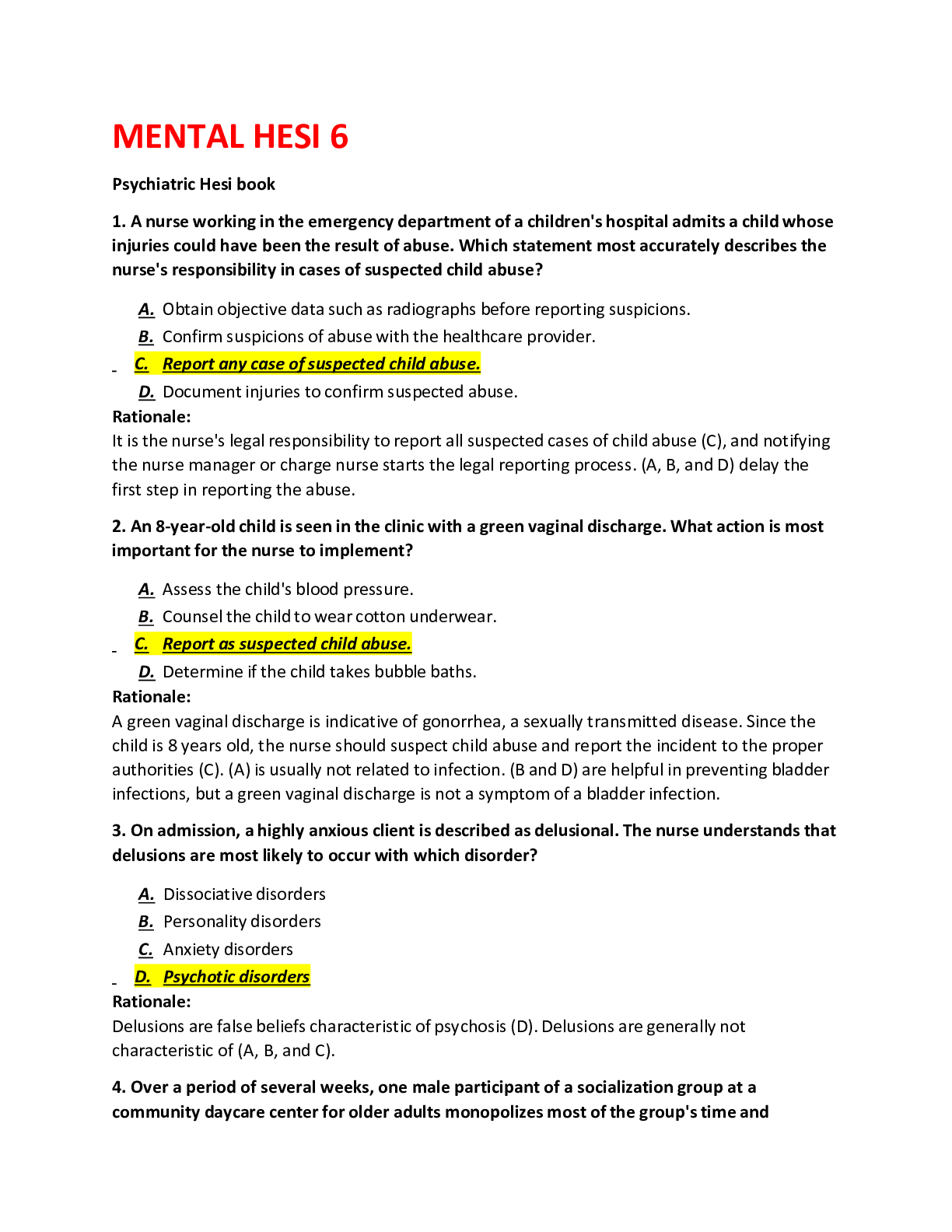
.png)
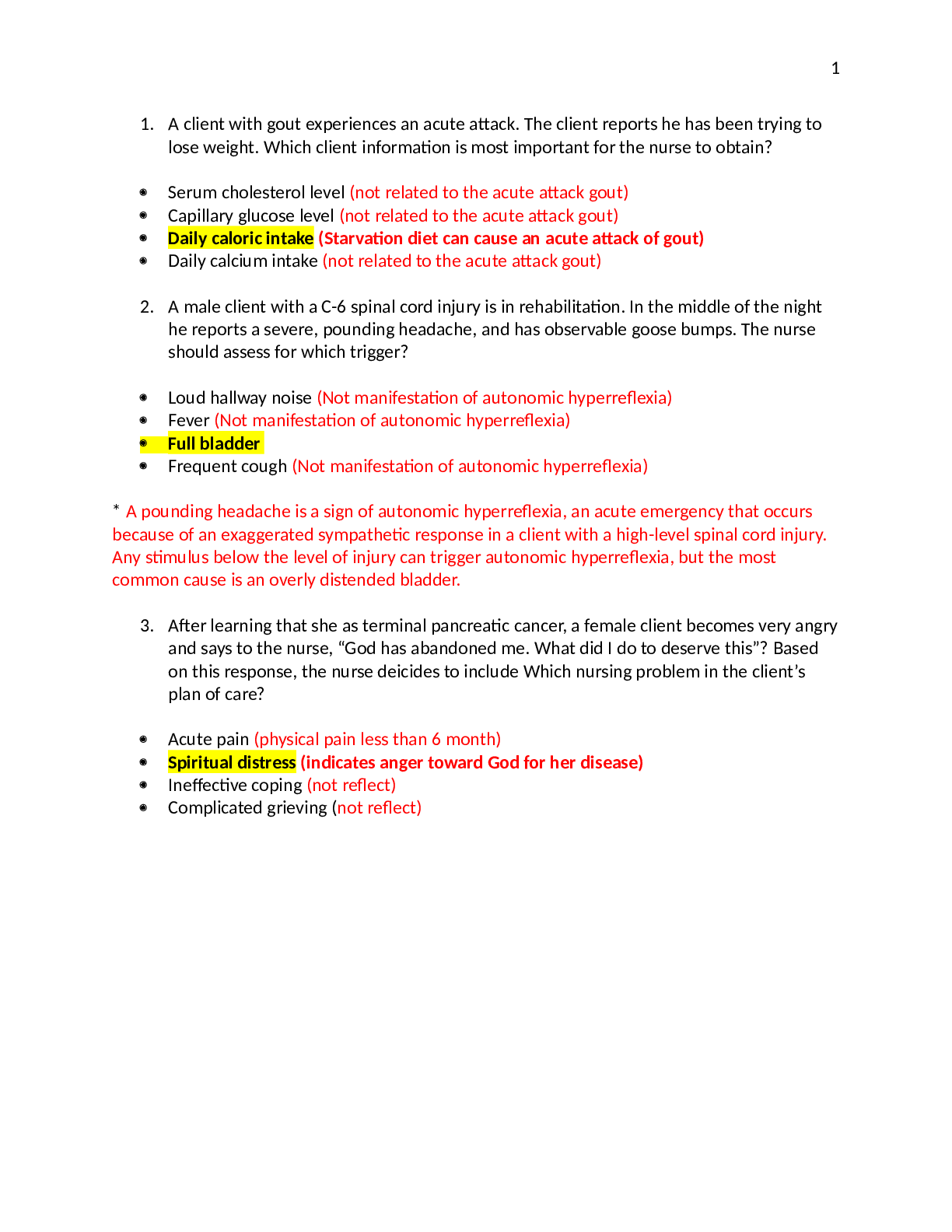
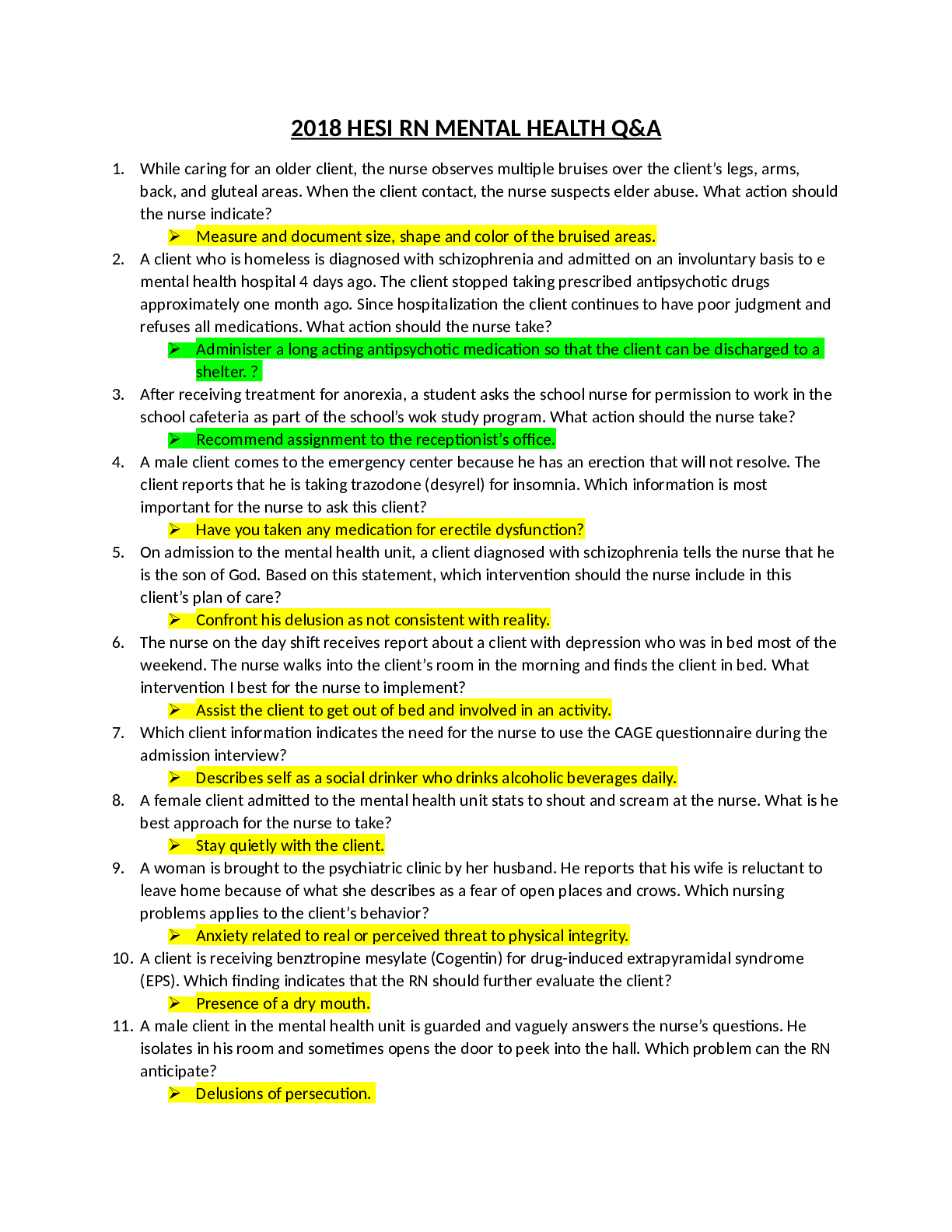
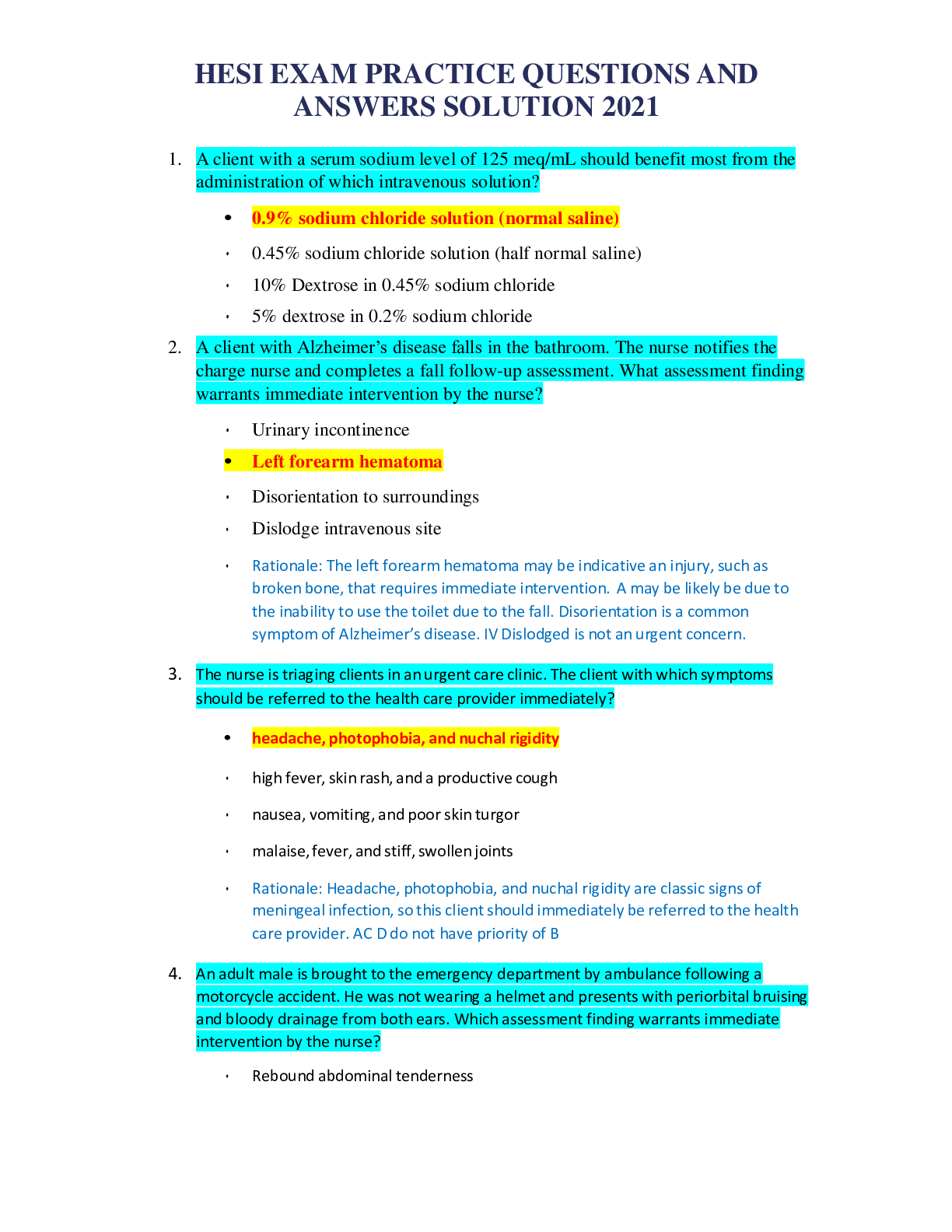
.png)

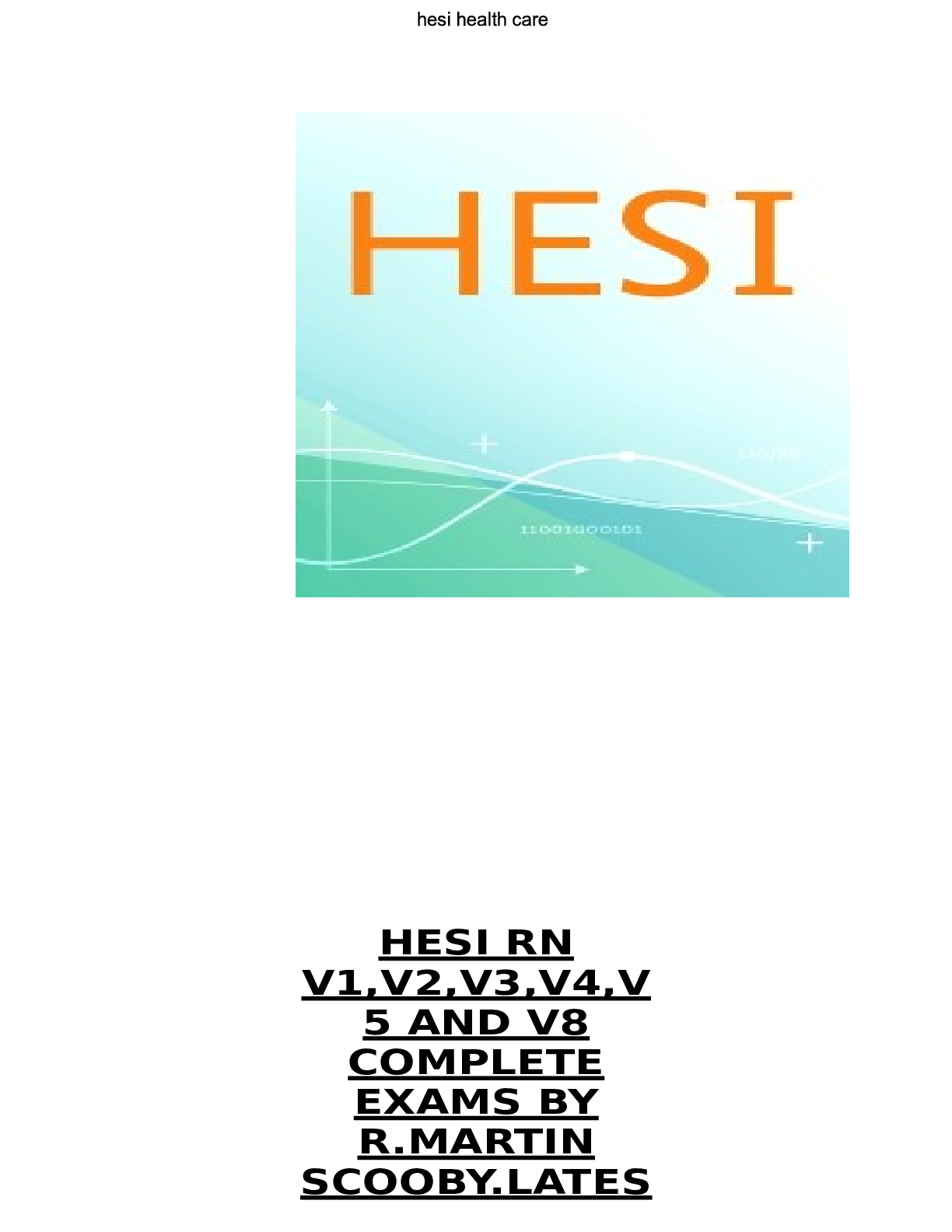
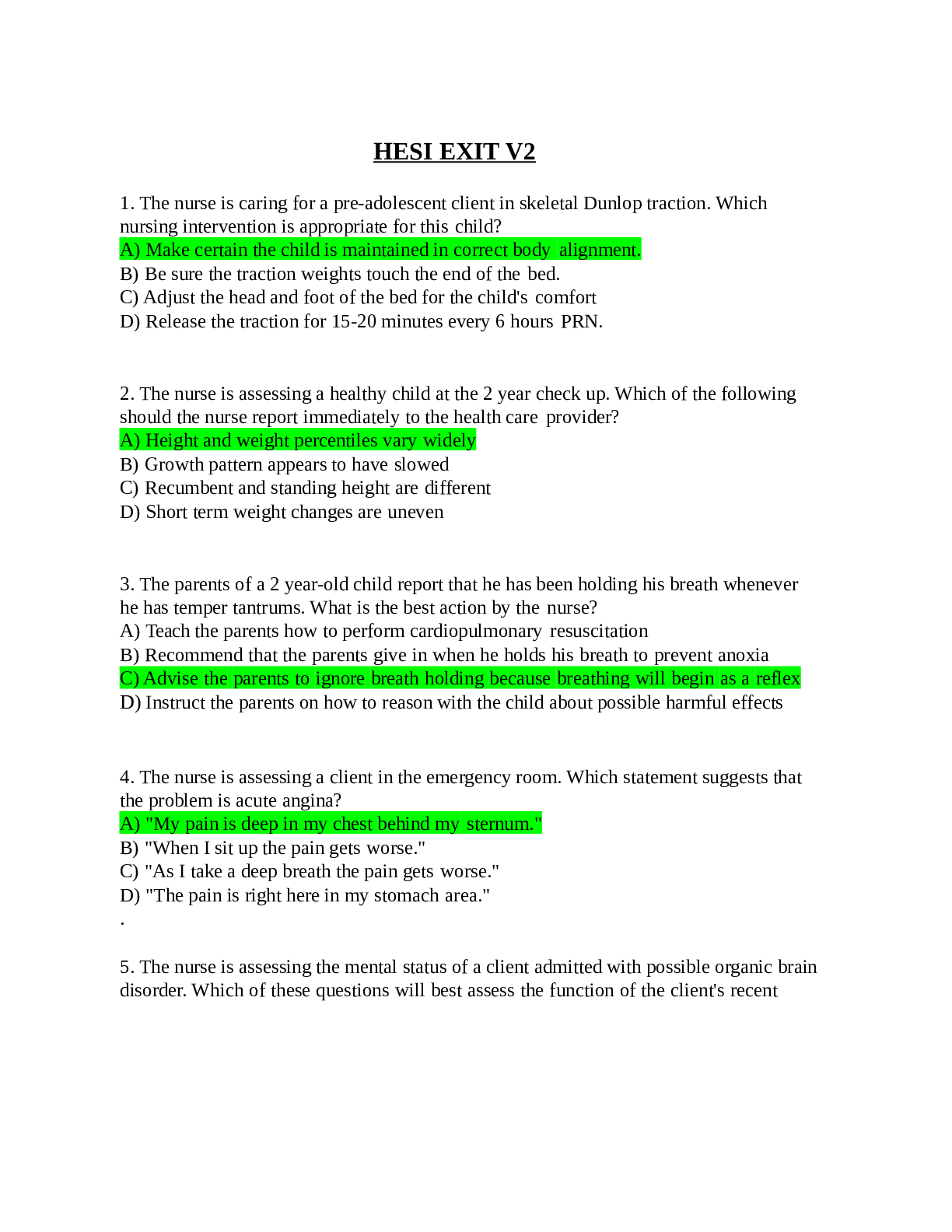
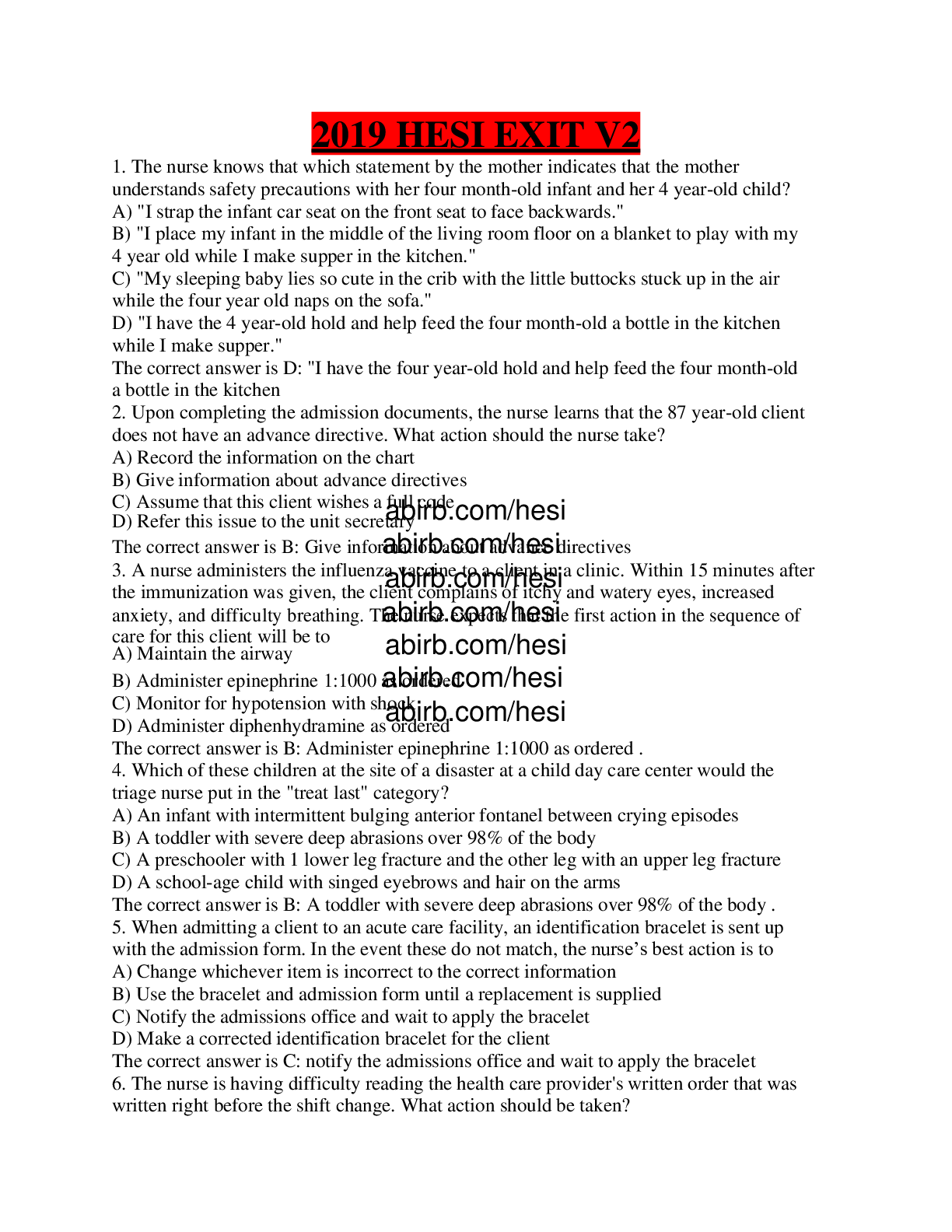
.png)
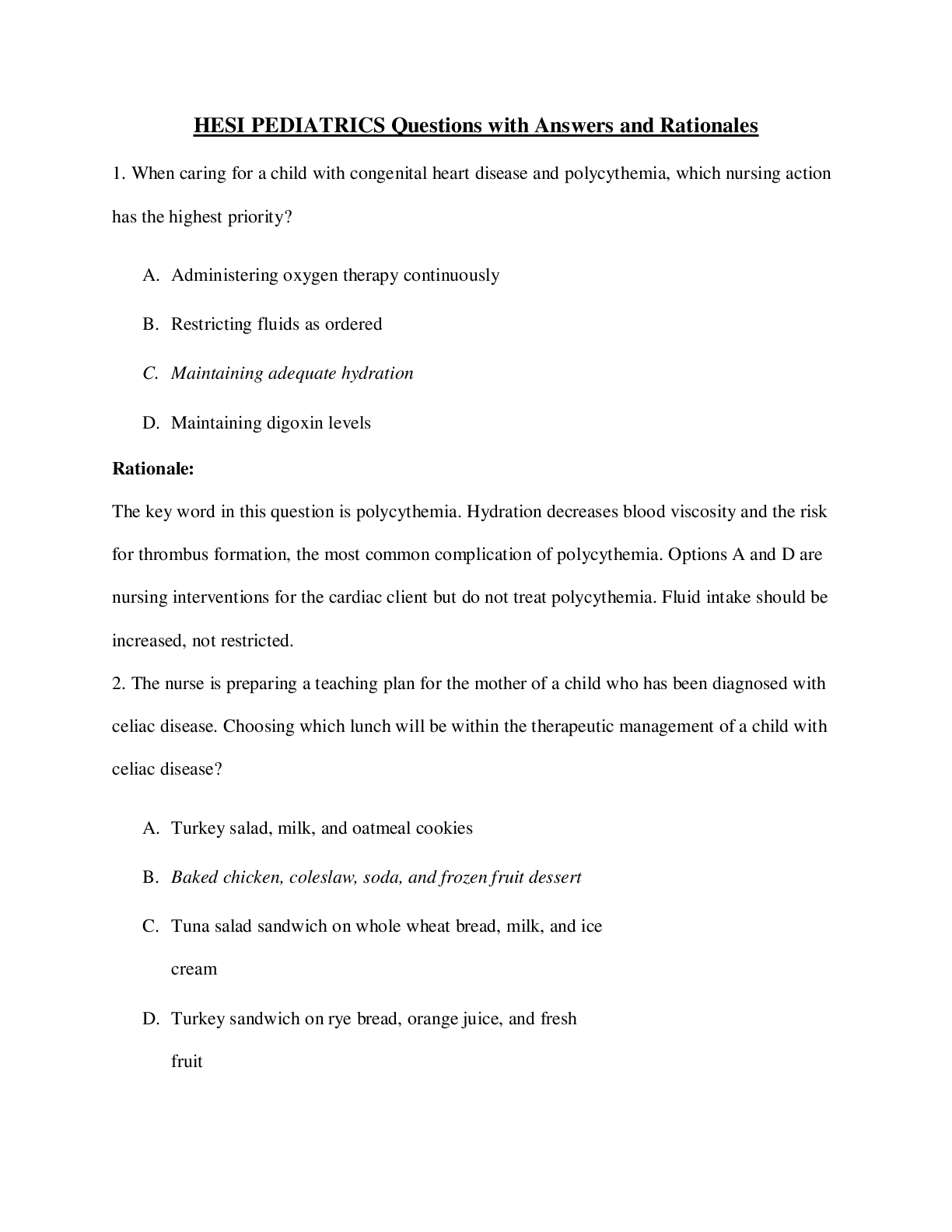
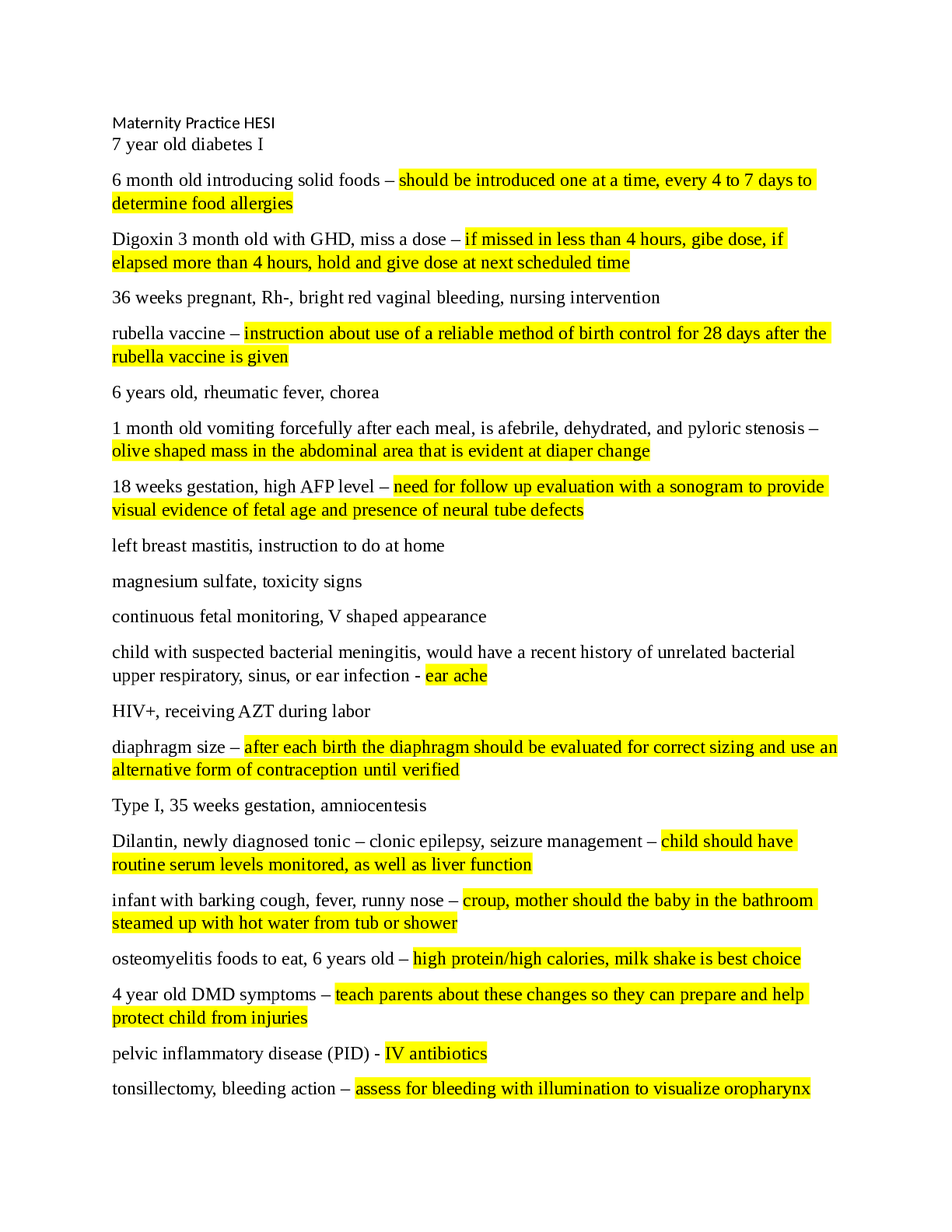
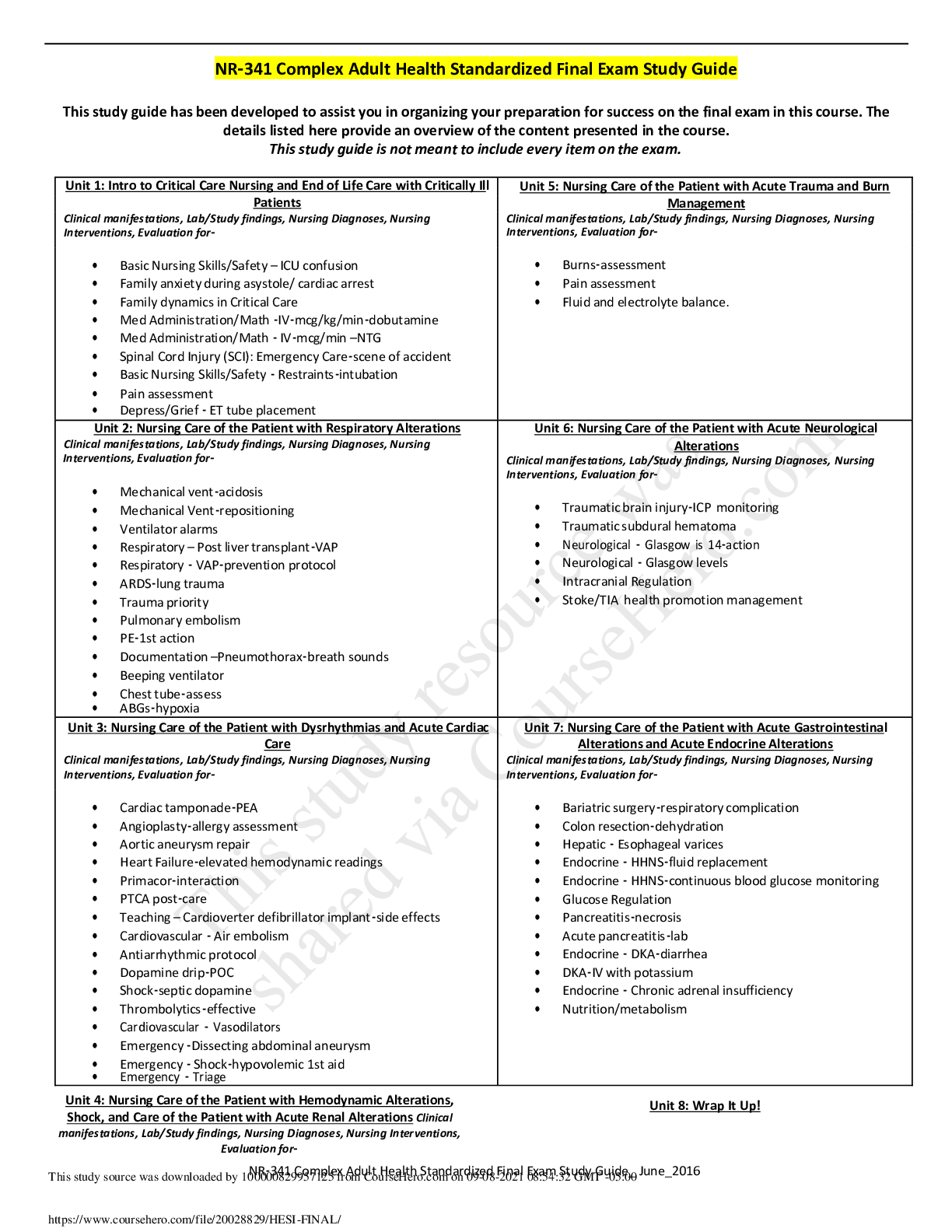
 LATEST QUESTIONS AND COMPLETE SOLUTIONS.png)
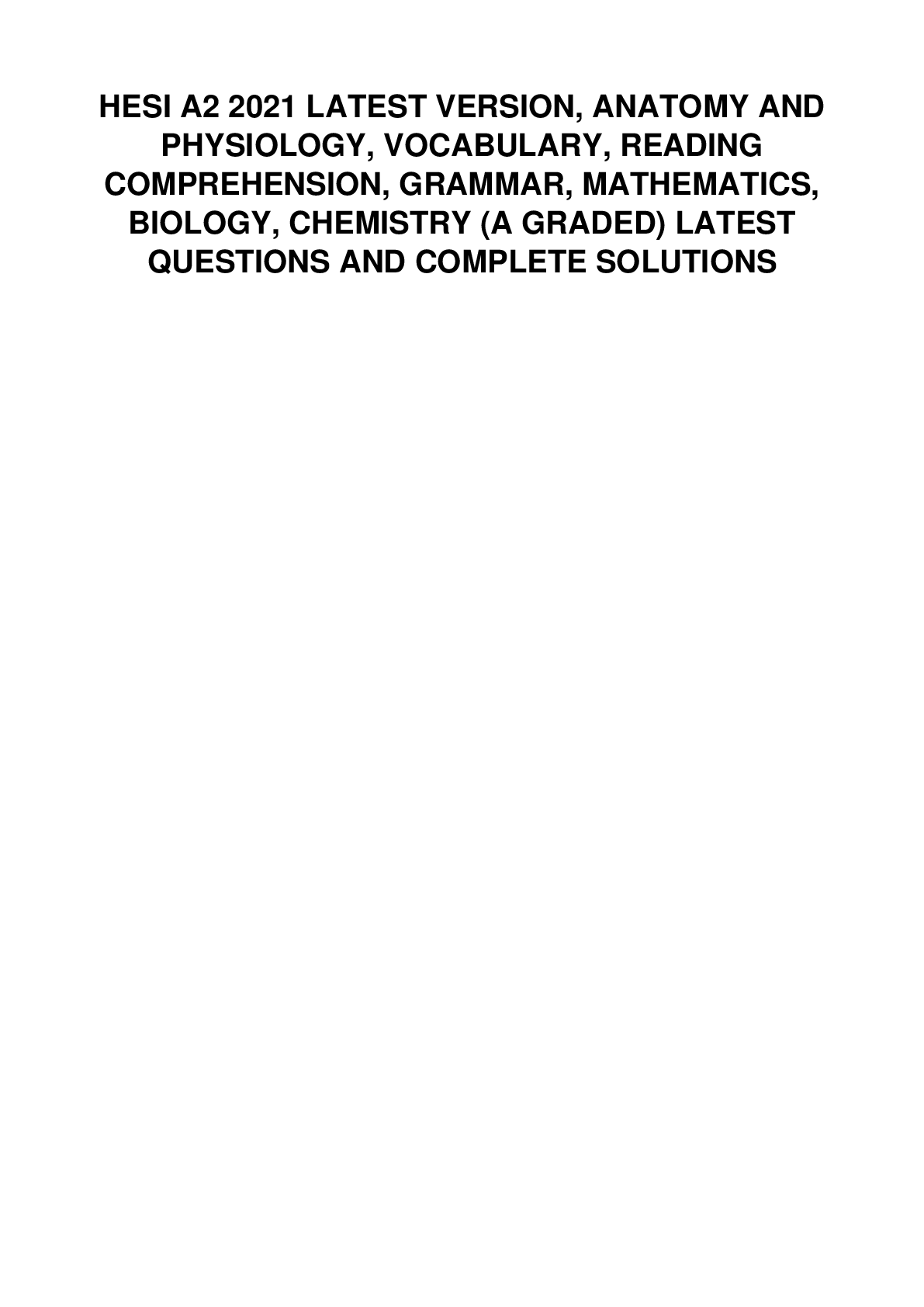
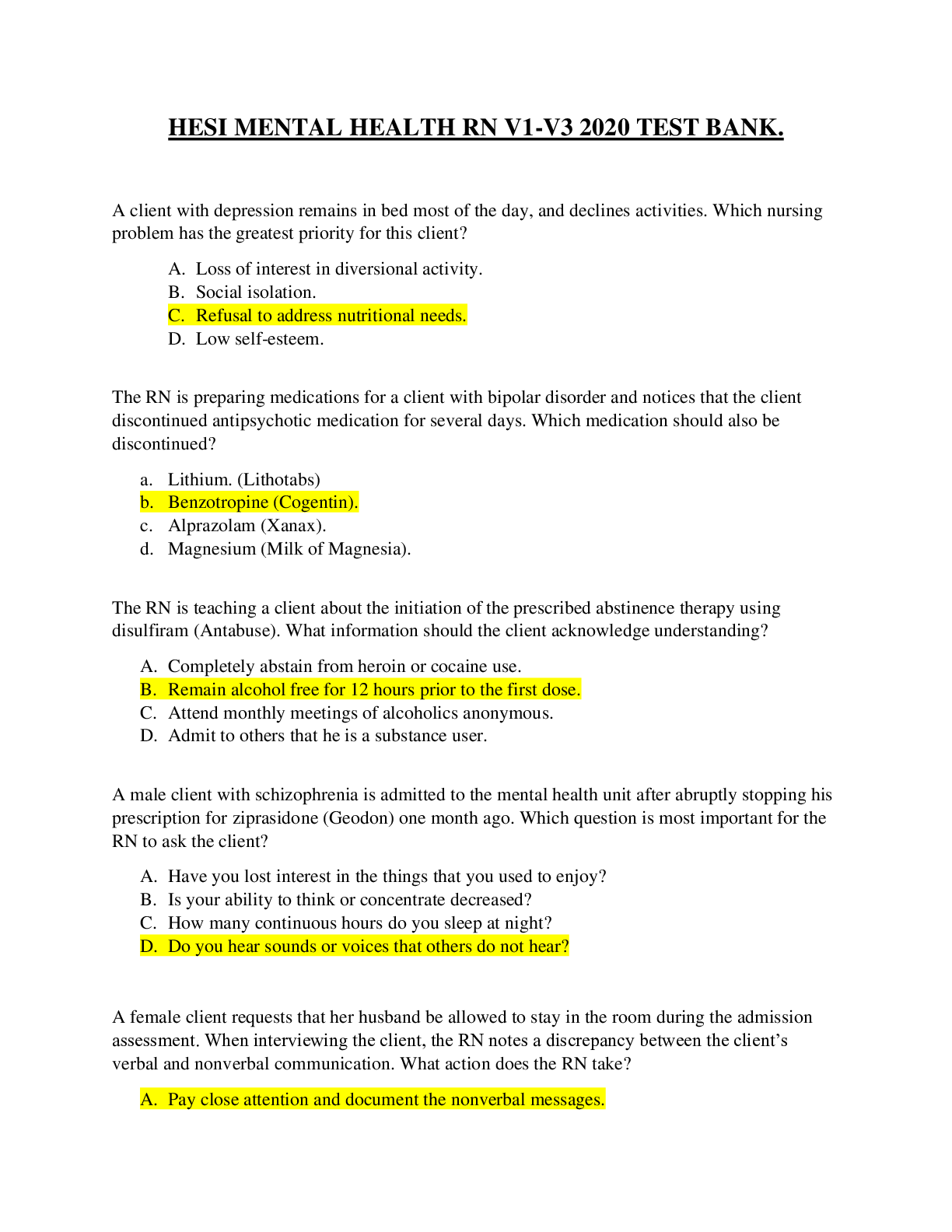
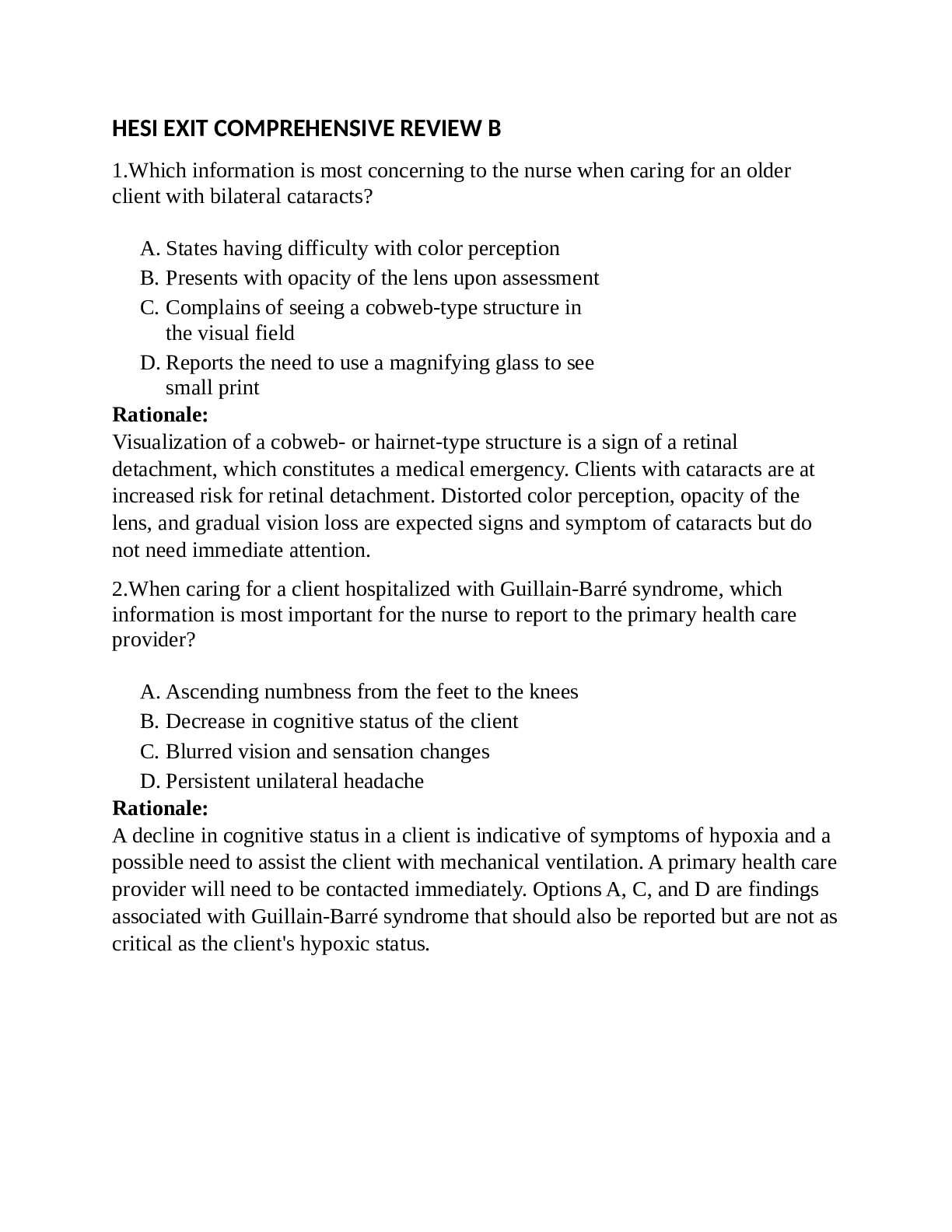
.png)
 Latest Questions and Complete Solutions.png)
 (2021 Latest Update) (A Graded) Questions and Complete Solutions with Explanations.png)
 (Latest Update) (A Graded) Latest Questions and Complete Solutions with Explanations.png)
 (Latest Update) (A Graded) Latest Questions and Complete Solutions With Explanations.png)
 (A Graded) Latest Questions and Complete Solutions.png)
 (Latest Update) (A Graded) Exam Elaborations Questions and Complete Solutions.png)
 (Latest Update) (A Graded) Exam Test Questions and Complete Solutions.png)

